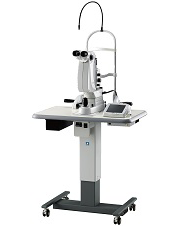- Glaucoma contents

Treatment Options for glaucoma
The damage caused by glaucoma can't be reversed. But treatment and regular checkups can help slow or prevent vision loss, especially in you catch the disease in its early stage.
The goal of glaucoma treatment is to lower pressure in your eye (intraocular pressure). Depending on your situation, your options may include eyedrops, laser treatment or surgery.
Eyedrops
Eyedrops for glaucoma can help decrease eye pressure by improving how fluid drains from your eye or by decreasing the amount of fluid your eye makes.
Prescription eyedrop medications include:
Prostaglandin
Xalatan

Lumigan

Sympathetic blocking agent
Timoptol

α2 receptor stimulants
Alphagan

carbonic anhydrase inhibitor
Trusopt

Azopt

Laser therapy
Laser trabeculoplasty is an option for people with open-angle glaucoma.
To increase outflow of internal eye fluid, your doctor performs laser trabeculoplasty with a laser that creates tiny holes in the filtration angle of the eye, where the cornea and iris meet.
SLT (Selective Laser Trabeculoplasty)
-

-
This treatment improves the flow and reduces intraocular pressure by using a laser onto the pigment cells that block the drain of aqueous humor.
It is effective for open-angle glaucoma, and can lower the eye pressure by about 25%.*1
The effect of this treatment dicreases in several years, but it can be performed repeatedly again.
It can be done on a day, and it is considered for those who tend to forget or feel troublesome to apply eye drops, and who have difficulty in eye drop treatment due to side effects of medicines.
*1 H Domack, V Schmidt.(2007, March 22) Pressure reduction after selective laser trabeculoplasty with two different laser systems and after argon laser trabeculoplasty--a controlled prospective clinical trial on 284 eyes. Retrieved from https://pubmed.ncbi.nlm.nih.gov/17385117/#affiliation-1


 Glaucoma contents
Glaucoma contents
